Previous Episodes
- December 2025
- November 2025
- October 2025
- September 2025
- August 2025
- July 2025
- June 2025
- May 2025
- April 2025
- March 2025
- February 2025
- January 2025
- December 2024
- November 2024
- October 2024
- September 2024
- August 2024
- July 2024
- June 2024
- May 2024
- April 2024
- March 2024
- February 2024
- January 2024
- December 2023
- November 2023
- October 2023
- September 2023
- August 2023
- July 2023
- June 2023
- May 2023
- April 2023
- March 2023
- February 2023
- January 2023
- December 2022
- November 2022
- October 2022
- September 2022
- August 2022
- July 2022
- June 2022
- May 2022
- April 2022
- March 2022
- February 2022
- January 2022
- December 2021
- November 2021
- October 2021
- September 2021
- August 2021
- July 2021
- June 2021
- May 2021
- April 2021
- March 2021
- February 2021
- January 2021
- December 2020
- November 2020
- October 2020
- September 2020
- August 2020
- July 2020
- June 2020
- May 2020
- April 2020
- March 2020
- February 2020
- January 2020
- December 2019
- November 2019
- October 2019
- September 2019
This episode we start our more in depth look at what is happening on the continent, breezing through the Qin and Han periods. We focus on the culture that grew up along the floodplains of the Yellow River, and how that really became the touchstone for Han culture, which then spread outwards in many directions—though our primary focus is on the Yangzi river system to the south.
Image showing Sinitic civilization around the time of the Qin dynasty. You can see how it is mostly concentrated in the north along the Yellow River, with some pockets along the Yangzi. That would extend farther south, especially in the later Han period. Image by User Yuninjie on en.wikipedia, CC BY-SA 3.0 <http://creativecommons.org/licenses/by-sa/3.0/>, via Wikimedia Commons.
This episode is fairly broad, only lightly touching on various subjects. Expect to dive into it again. In the meantime, here are some artifacts from the period that may be of interest:
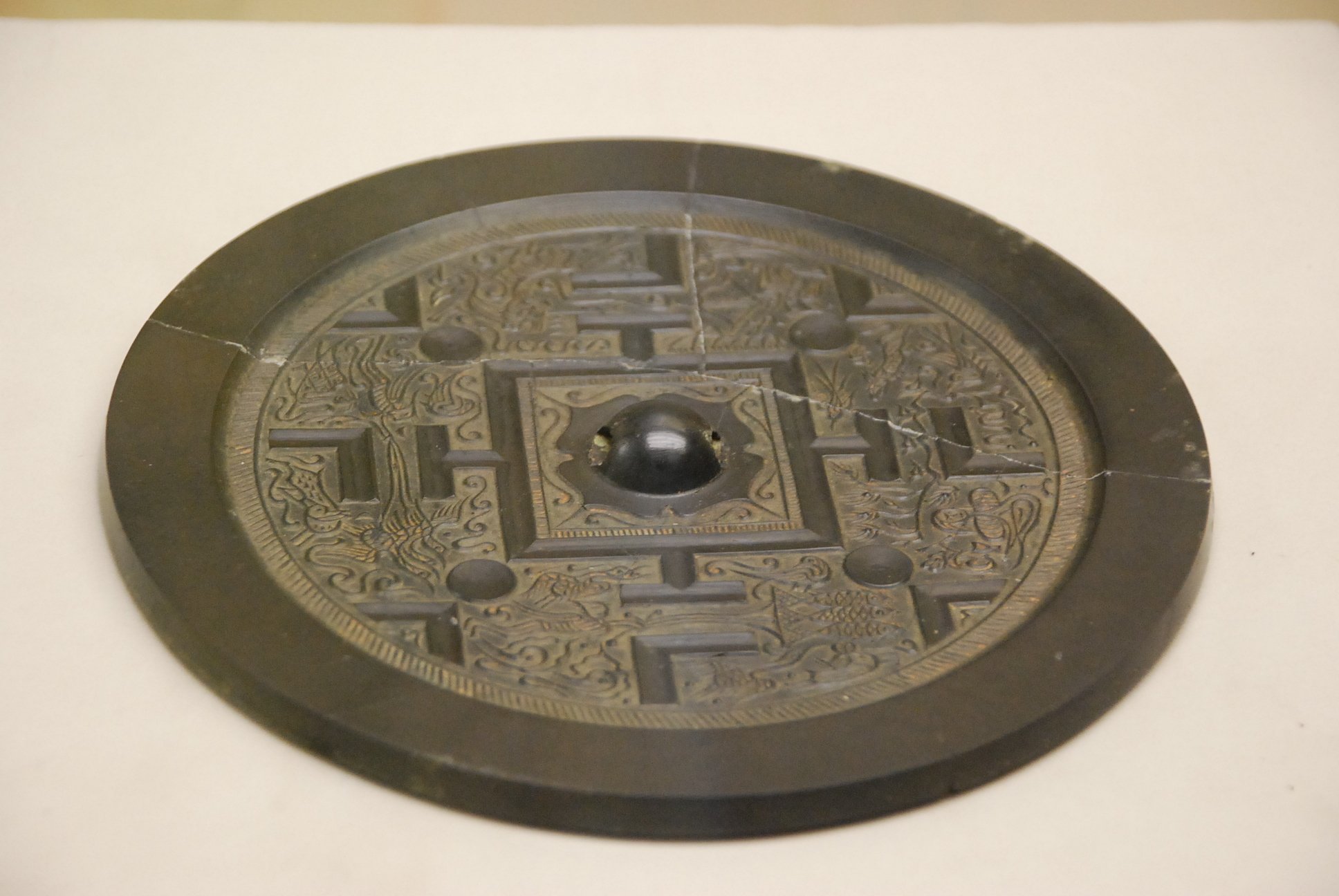
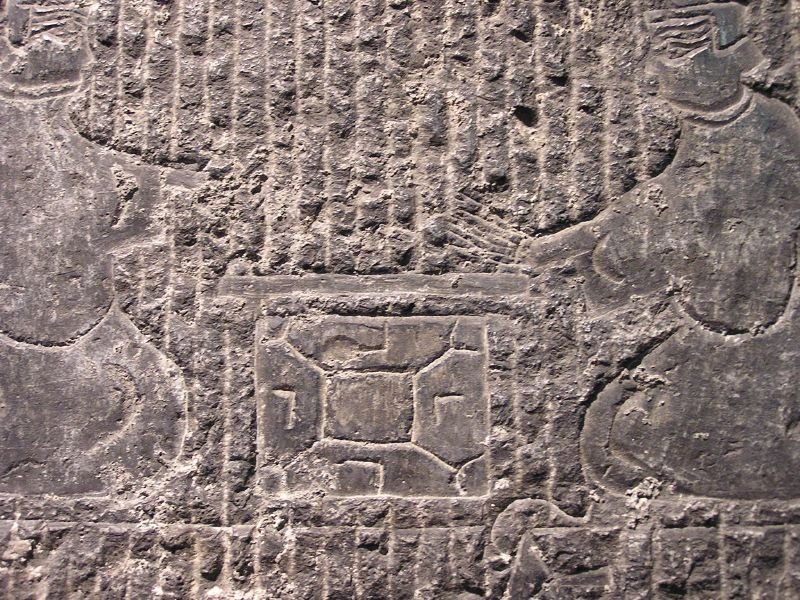
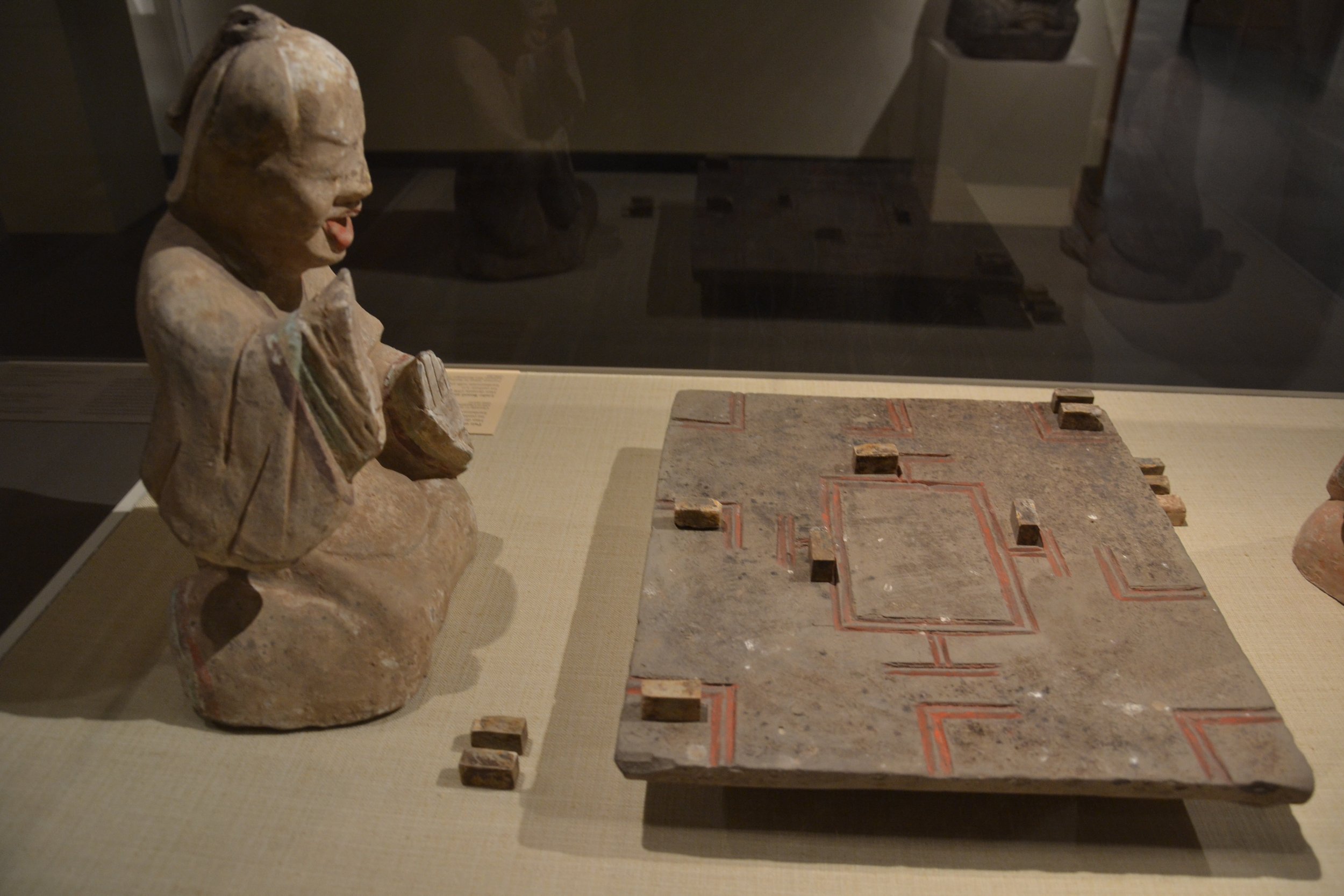
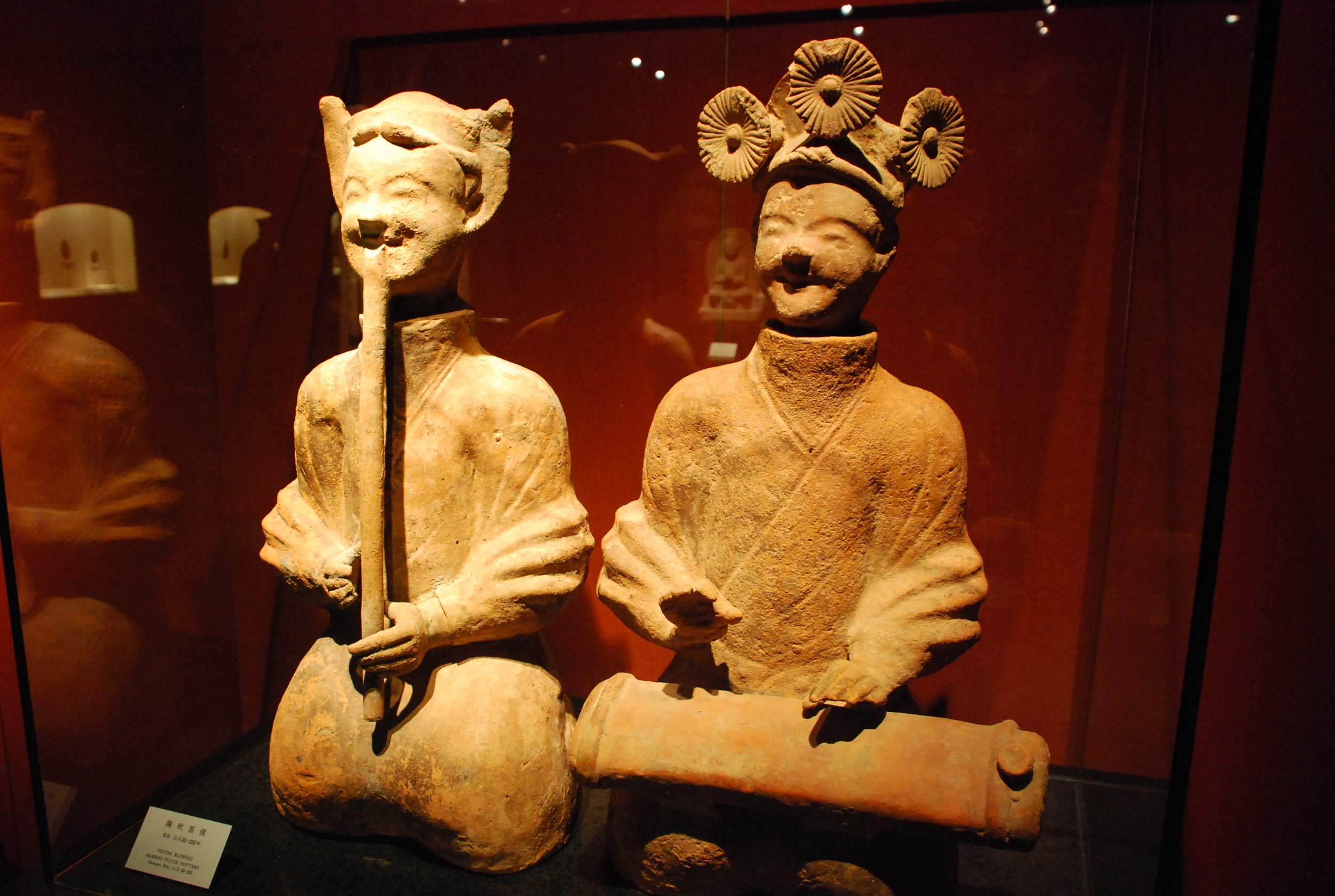
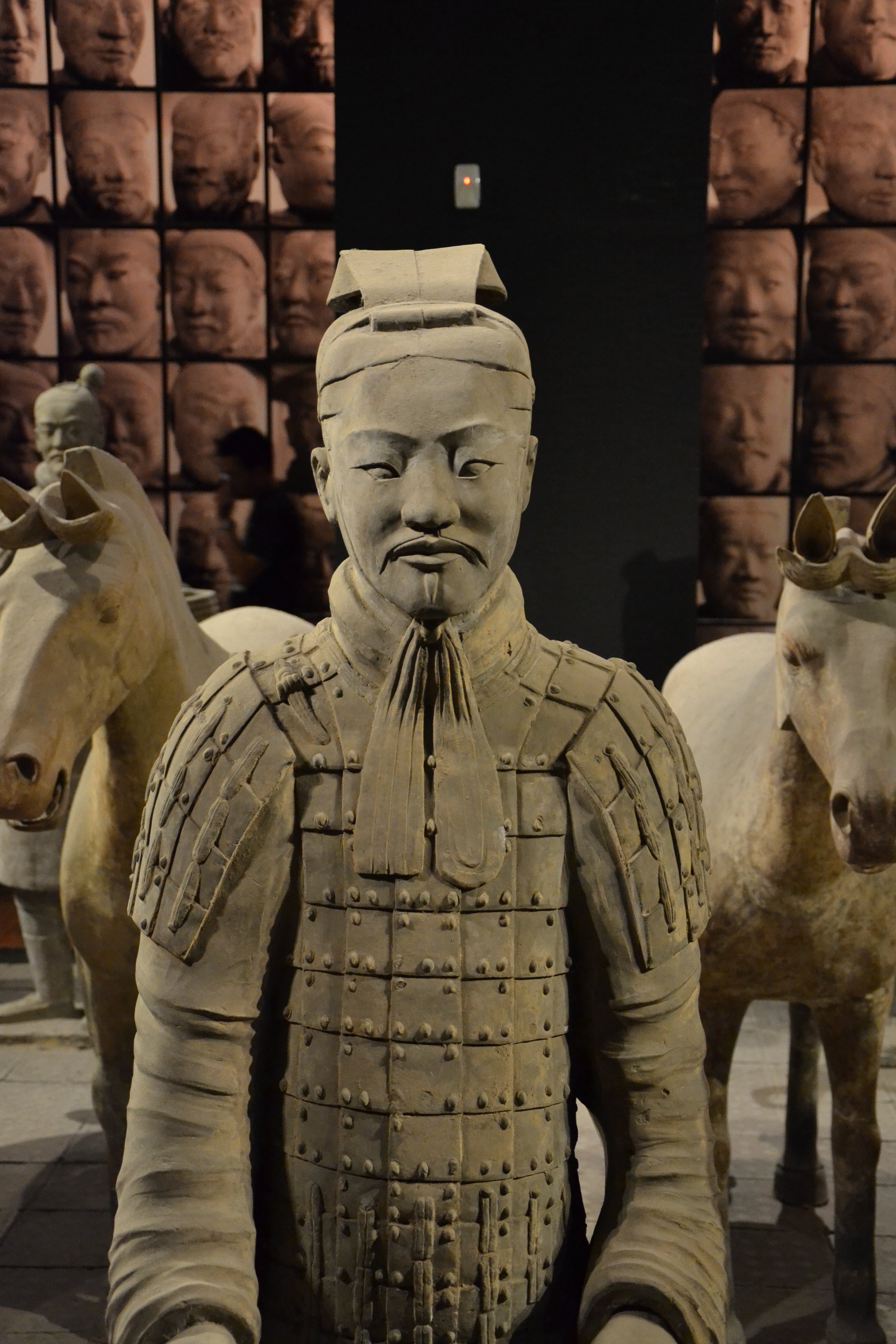
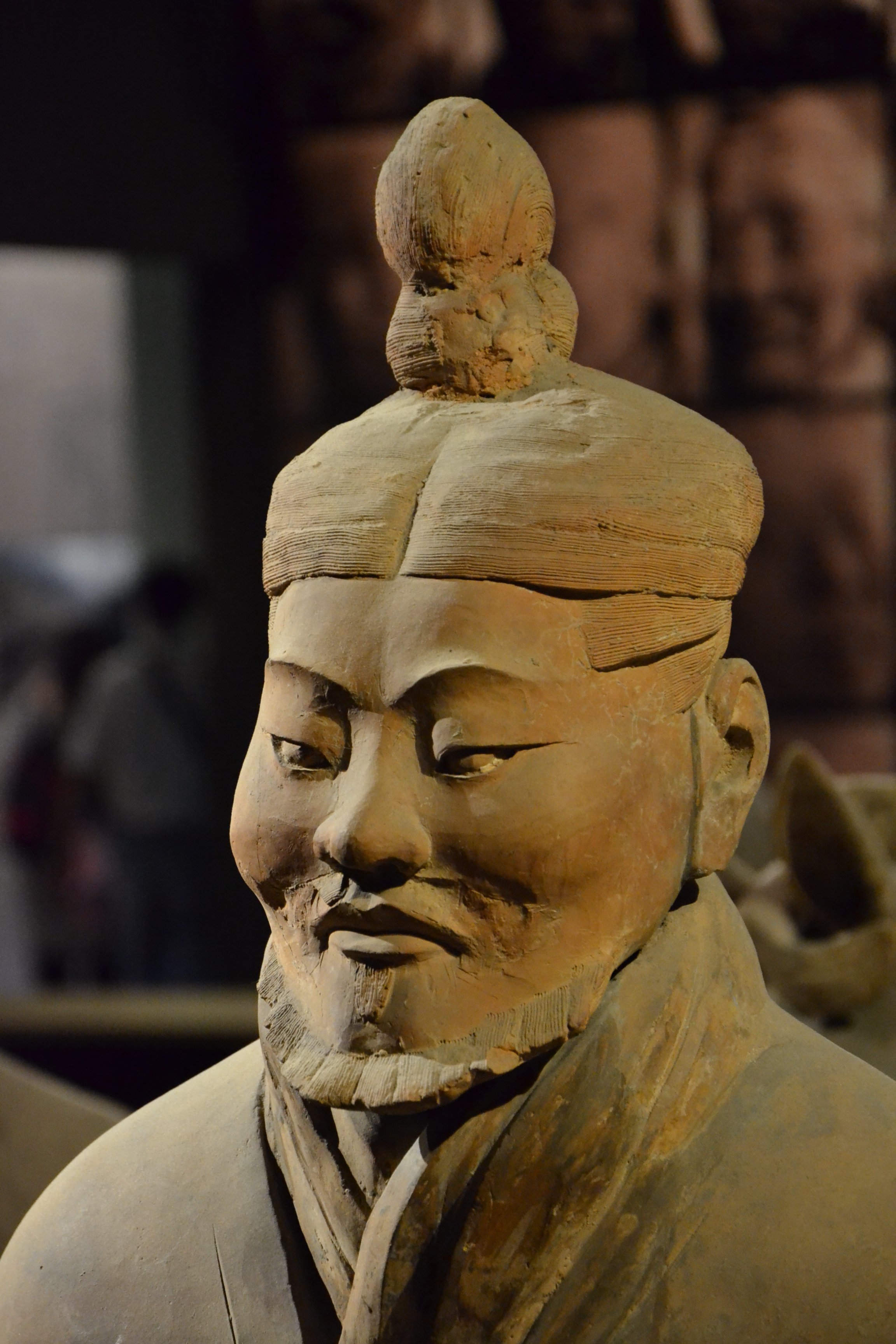


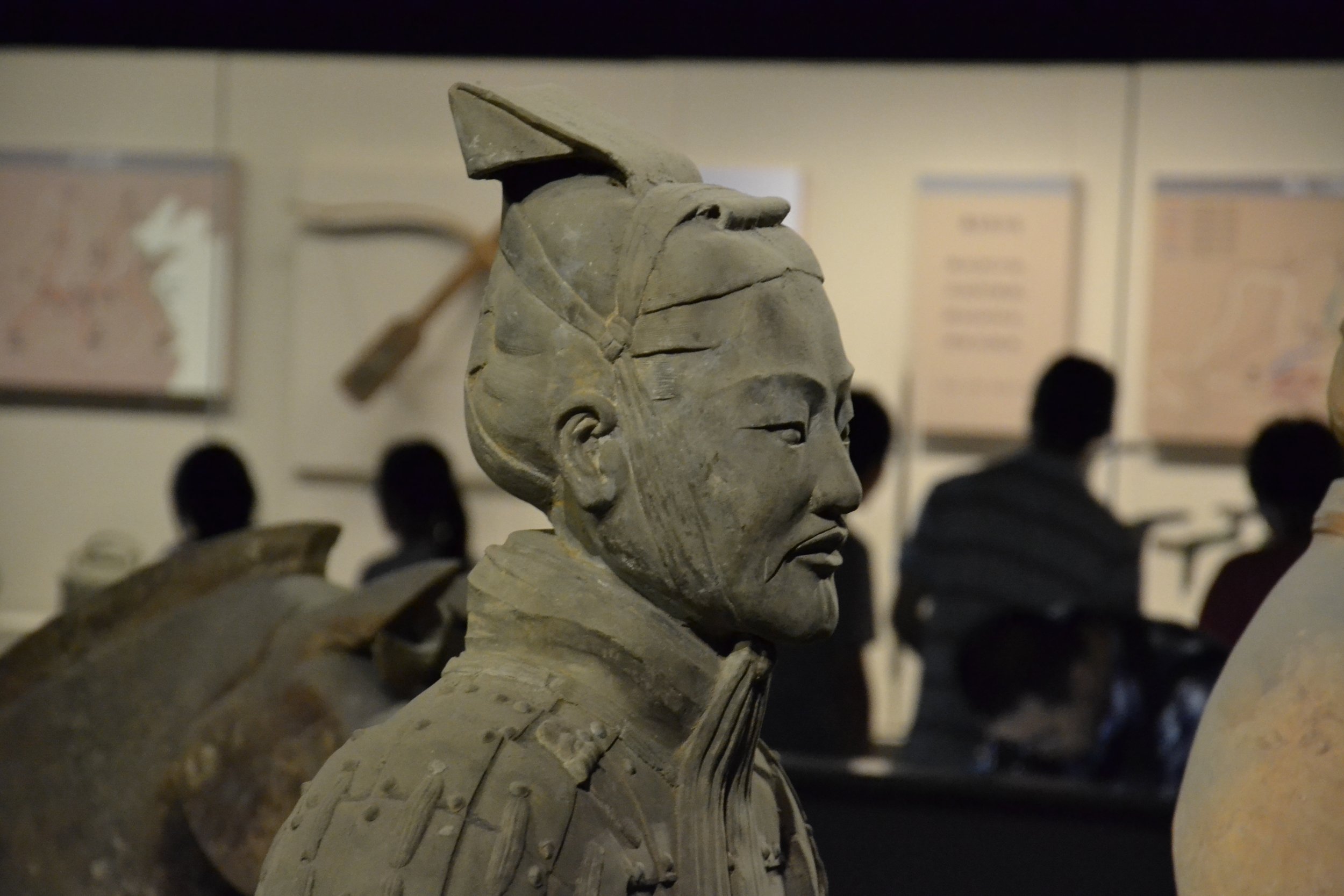

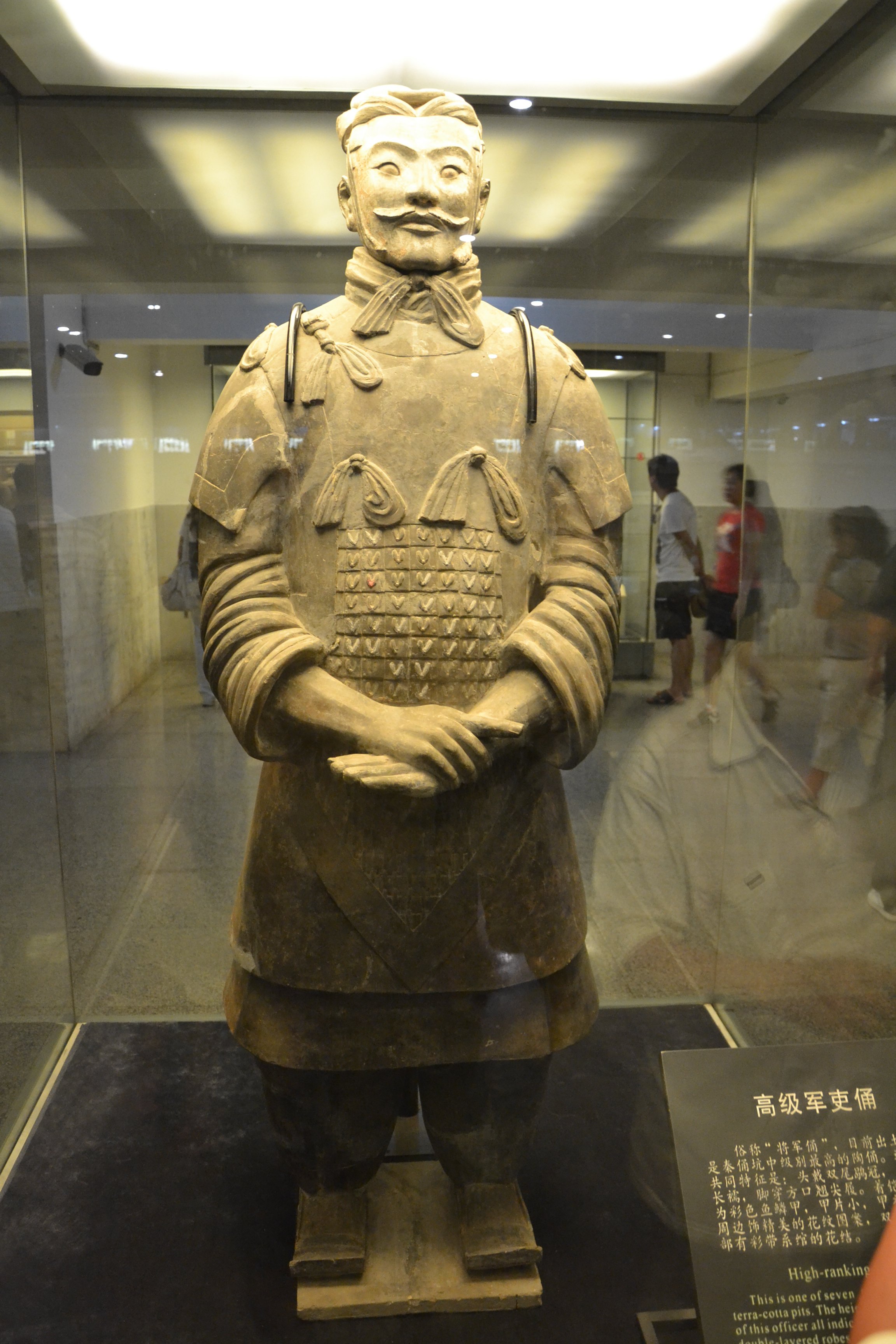
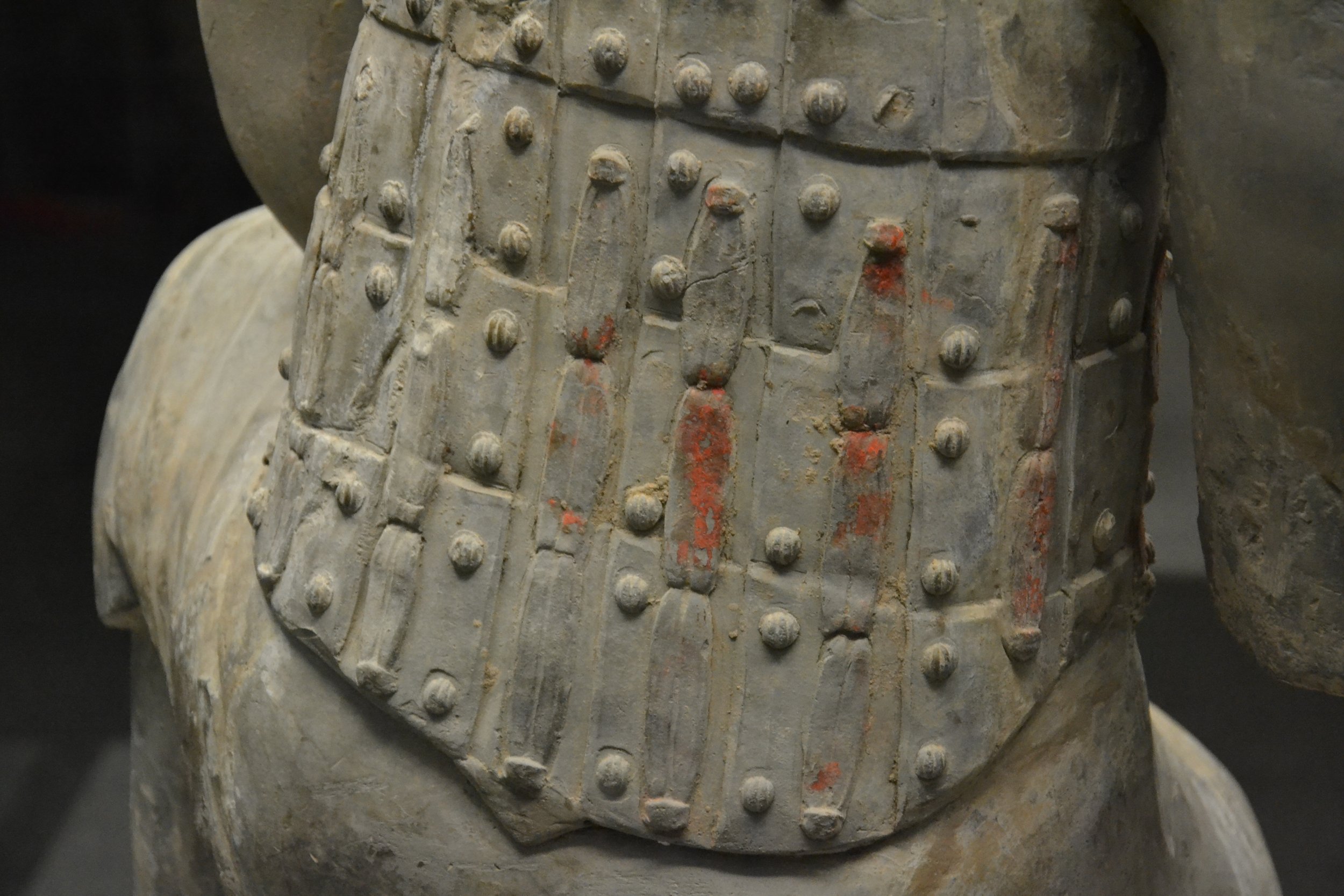
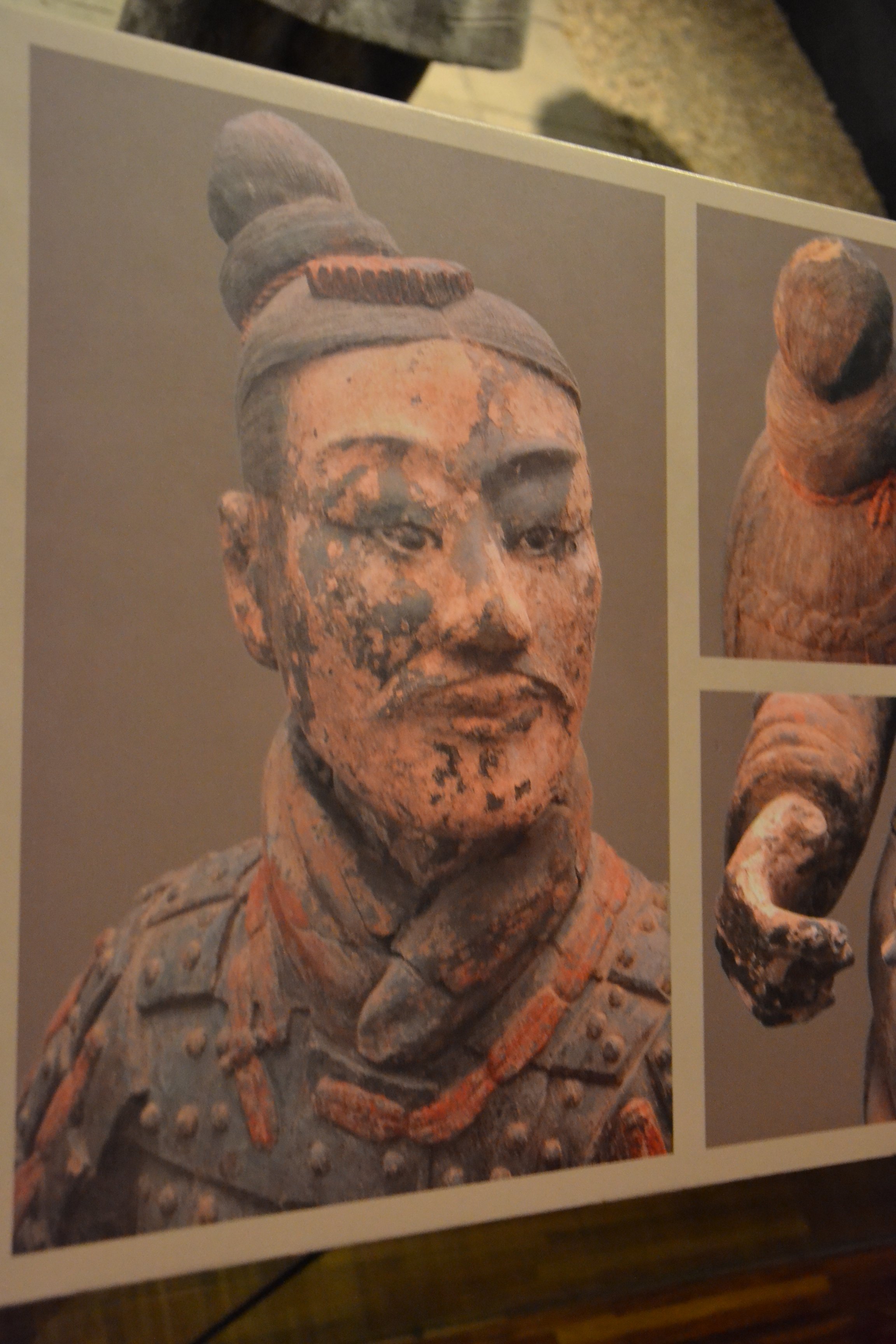
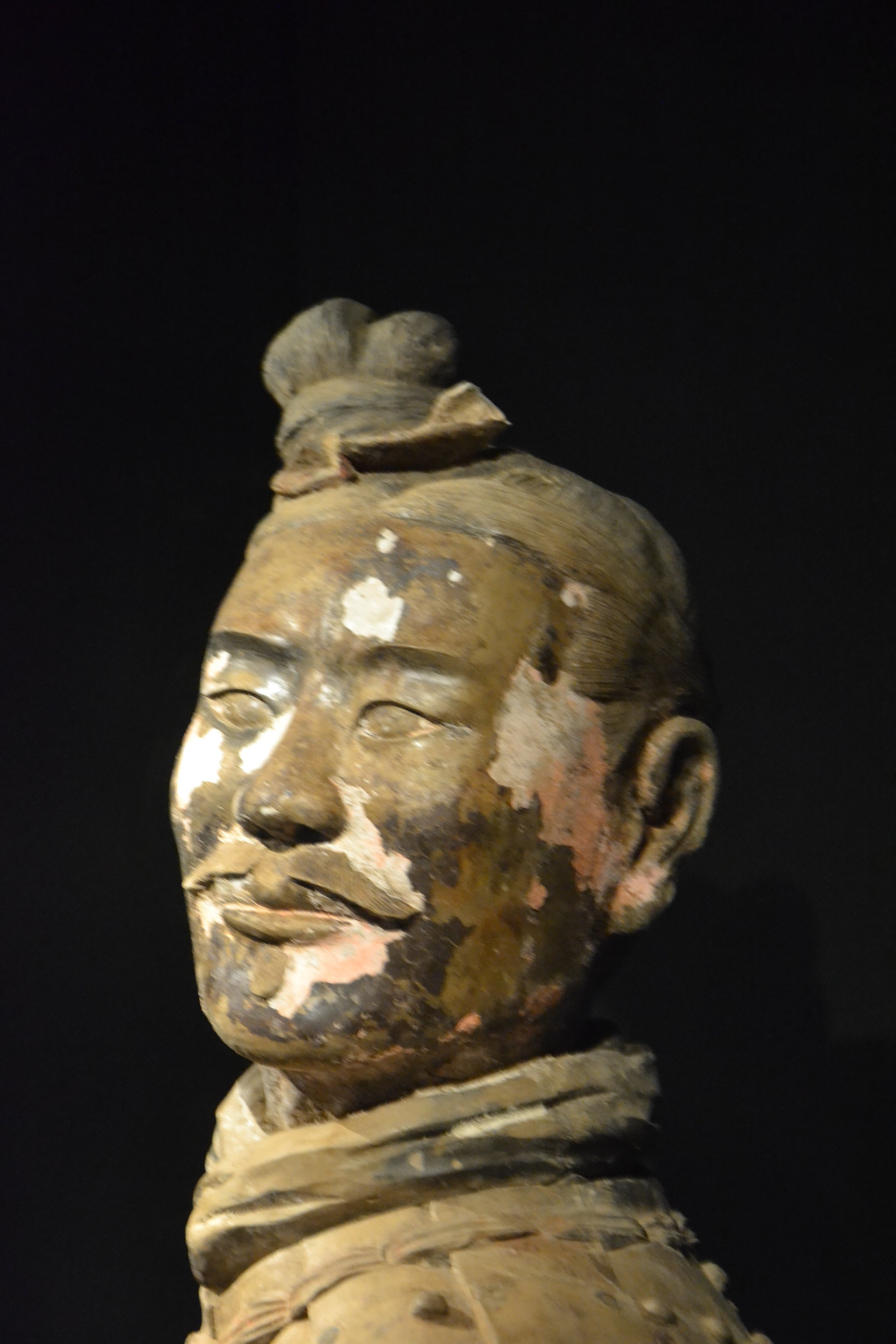
More photos by the author from various museums can be found at the following links:
-
Welcome to Sengoku Daimyo’s Chronicles of Japan! My names is Joshua and this is Episode 71: The Yellow River and the Birth of Han Culture.
Before we get started a quick shout out to Arnold for donating to support the show. If you would like to join him you can do so over at our Ko-Fi site, that’s Ko-Fi.com/Sengokudaimyo, or find us on Patreon.
So we’ve been working our way through the Kiki—the Japanese chronicles—and we’ve made it through to the very start of the 6th century. In that time we’ve seen the state of Yamato grow, though in all likelihood its direct influence likely remained contained in the area immediately around the Nara Basin and out to the area of modern Ohosaka. Which isn’t to say that they weren’t a leader in their confederation, or that their dealings were confined to that area any more than later daimyo would be confined merely to the area of their own domains. It is still a question as to just how much influence Yamato had, but clearly they were a trendsetter, and had connections with the other lands of the archipelago and the continent.
And from the continent, the archipelago was receiving new technologies and new ideas. Envoys from Yamato were being sent, all the way to the court of the Liu Song, near modern day Nanjing, along the easternmost reaches of the Yangzi river. And they, as well as continental visitors and immigrants, were bringing back horses, writing, weaving, and more, including ideas of statecraft. Over the coming centuries we’ll see more and more of this, as Yamato grows and becomes ever more connected with the mainland.
And because of that, I want to once again take a detour away from our islands, and focus for a time on what was happening in the mainland at the beginning of the 6th century, as a lot of this is prelude to what we will see going forward in the archipelago. The governmental systems being used, refined, experimented with, and, some might say, corrupted, on the continent would become the model on which the future Japanese court would base their own system—with some twists of their own.
And yet it’s important to remember that the continent was not a monolith - it was home to various groups and ethnicities and cultures. However, just as the Roman empire had its impact on the various cultures of Europe, eastern Eurasia was heavily impacted by the culture that arose out of the Yellow River Basin.
Speaking of the Yellow River basin, I’d like to start by painting a picture. When we started this whole project, we talked about the islands of Japan and their geography, which impacted the development of Japan and continues to be a factor today. Therefore I figure it is likewise useful to talk somewhat about the geography of the continent.
If we start with the Korean peninsula, we see that it is similar to the archipelago—mountainous, with areas of flat land. In fact, like Japan, some 70% of the land is mountainous. This continues into modern China until you hit the Liao River basin in the west and the Amur River to the north. We know this as a home to Tungusic speaking people, as well as Mongols, and the Nivkh on the coast, but there is little enough in the written record, though there has been archaeological research in the area. This is likely where the people of Goguryeo came from, and Amur and West Liao DNA has been seen in the people on the archipelago, so we know there was contact.
This may be an area to explore more. Certainly the area played a large role in more recent historical events. But for now, I want to turn south, to the main part of what is known today as China.
That name, by the way, is something I’ve touched on before: “China” is something of an overloaded term, as is the concept of “Chinese”. It can be used for just about anything within the bounds of the modern state of China, which includes much of the area from the Amur River in the north all the way down to modern Vietnam in the south and all the way west to modern Kyrgystan and Tajikistan. At the same time, there are clearly differences between the Uighur, Mongol, Tibetan, Han, and many other cultures, as China is a nation with many cultures and ethnicities living within its borders.
So I’ll try to be specific, and often speak in terms of ethnic Han people and Sinic culture, broadly referring to the ethnic group and cultural norms that grew up largely along the Yellow River, which is one of two main rivers that run through the area of China – the other being the Yangzi, to the south.
Looking at a modern map, you can largely divide eastern China into roughly four regions. First, there are the northern region of Inner Mongolia and Manchuria.
Second, south of this, there is the Yellow River. The Yellow River starts up in the mountains and flows through the Loess Plateau, the source of the sediment that gives the river its brownish-yellow color—and thus its name. It then passes through a mountainous region and then the lower regions of the Yellow River flow largely through wide, flat land, before the river empties out into the Yellow Sea – likewise named for the color of the sediment that the river disgorges into it. The Yellow Sea opens out past the Shandong peninsula and is bordered on the east by the Korean peninsula until it reaches the East China sea. This Yellow River area was the homeland of the Han ethnic group, and the origins of the Shang and Zhou dynasties—as well as many of the dynasties up to the Han.
The third region, south of the Yellow River is the Yangzi River and its surroundings . Compared to the flatlands of the lower Yellow River, the Yangzi tends to be more hilly. In the east it is relatively flat, along its lower section, where it empties into the East China Sea around modern day Shanghai. The central region is more mountainous, and in the west is the Sichuan basin, a largely flat area surrounded by mountains, which proved both a help and a hindrance to people living there. Originally, the Yangzi was populated by numerous ethnic groups, who are often lumped together as the Bai Yue, or Hundred Yue. We will talk more about them, later.
Last there is the far south, which is a largely mountainous region that extends to the South China Sea. This was largely considered foreign or frontier region through most of the time we will be talking about, with some outposts and commandries, like those in the Korean peninsula, but for our purposes, right now, we will largely leave them be.
And so, let us go back to the Yellow River region. As I noted, the river brings down sediment from the Loess Plateau, and deposits it along the river bed. This was particularly true when the riverwould flood—due to either heavy rains or melting ice in the mountains near the river’s source. These floods would inundate the flat lands of the lower Yellow River, and deposit that soil across the land. This made the land incredibly fertile, but the unpredictability of the floods was a constant danger. This, in turn, led to settlement patterns where people built communities on the occasional high ground in an attempt to avoid the floods.
Early organization appears to have been built on the idea of taming the waters, and yet it was a constant battle. Dikes would be built and the sides of the river could be built up, but over time the sediment would deposit on the riverbed, raising the riverbed. Without constant dredging and building up of the riverbanks, the river would eventually flood. Sometimes this could change the location of the river—or at least its main branch—by over 400 km or more.
In many ways, then, good government in and around the Yellow River basin was, indeed, tied to mitigating natural disasters—or at least flooding. A government that kept up work on the river and ensured that it was properly managed would reduce the damage caused by flooding, while a government that was negligent would eventually allow the precautions to collapse. This is a theme we see early on in Chinese documentation, and it prompted the German philosopher Karl Wittfogel to form a theory called the “hydraulic hypothesis” which says, basically, that people banding together to manage flooding and irrigation was what prompted the formation of complex states. The real explanation is more complex, but it’s easy to see where this idea comes from.
The Shang and then the Zhou were early, powerful states. Much as with Yamato, the question of just how powerful is still somewhat up in the air, but this does appear to have been the foundation of early Sinic thought, and in particular the Duke of Zhou was often credited with creating the various rites and rituals that were considered at the core of good statesmanship.
In some ways, I’d say this was similar to what we see in Yamato, in that there were certain rituals that the sovereign was expected to perform that, along with administrative and military might, helped maintain the state. But the geography of the Yellow River Basin allowed for larger populations and, in some ways, allowed for greater control by the state, at least early on.
From what we know about the Zhou, it appears to have been a feudal system, with a social hierarchy. The sovereign sat at the top, with courts of nobles—members of elite families. These families were given control of large territories themselves—they were basically the hegemons of their own states, with Zhou at head of the coalition. And that seems to be part of the Zhou’s eventual downfall. While the nobility initially owed their place and lands to the ruling sovereign, over time they amassed their own, independent power. Combined with external threats, the Zhou weakened, and the situation quickly deteriorated. The various families became insular, and each state set against each other.
Many of these states would have names that will become all too familiar in later eras—names such as the Song, the Jin, and even the Wu, read in the archipelago as “Kure”. This turbulent time led to a certain diversity of thought and ideas. Confucuis, Laozi, Sunzi, and many other famous philosophers came from this period.
This is the Warring States Period, from about the 5th to 3rd century BCE—and yes, it is the same name as the period in Japanese history, the Zhanguo Shidai, or Sengoku Jidai. This is no accident, but rather a deliberate call-back by Japanese of that era and later periods to connect their own turmoil with that of China’s classical age. This era of conflict and division on the continent would eventually be brought to an end by forced unification under the state of Qin, the westernmost of the various kingdoms, situated around modern Xi’an, along the Wei River, which runs east to the Yellow as it heads out onto the plains of the lower reaches.
It was the Qin who unified the warring states through military conquest and instituted a harsh regime. The ruler of Qin took the name of Emperor, or Huangdi, and is still remembered as Qin Shihuangdi, the First Qin Emperor. He instituted a state based on the legalist system that had brought Qin to power, and he did well for himself. After all, his is the tomb of the terracotta army in Xi’an, a tomb on par with that of Daisen kofun in Japan, in size, and even moreso considering everything else in the complex – which is still being actively mapped and excavated, although the main tomb remains undisturbed at this time. The terracotta warriors themselves are truly remarkable, each one with unique features and tremendous detail down to the hobnails in their boots. These statues were originally vividly painted, though the pigments rarely survive long after being exposed to the open air. They provide us an unmatched view of what the Qin army looked like, such that it is suspected that each statue—or at least their head—was likely a depiction of an actual soldier in the army.
As I mentioned, the Qin state was organized around Legalist principles. Legalism insisted that all people follow exactly the rules and laws of the state. The theory was that if everyone played their role exactly, then the state would run smoothly. Ideally it eschewed favoritism and familial ties for a strict interpretation of the laws that applied to everyone, equally. It enforced this through draconian punishments. For example, there is a story that the emperor was out one day enjoying himself, and he fell asleep. He had with him two servants, one who was responsible for his cloak, and another who was responsible for his umbrella. As time dragged on, the servant responsible for his umbrella fell asleep as well, and so did not notice that the sun had shifted and the emperor was exposed. The other servant, thinking little of it, simply moved the umbrella so that the emperor remained in the shade.
When the emperor woke up and found out what had happened, he had both men punished. The one for falling asleep and not doing his job, but the other for trying to do someone else’s job instead of tending just to his own.
As one might imagine, this was considered a mite harsh by many, and it tended to rub people the wrong way. Still, Qin Shi Huangdi maintained power over a unified nation for nine years, despite numerous assassination attempts. He was eventually undone not by assassins, but by his own quest for immortality—the same quest that had him send people out looking for the famed Island of the Immortals, which we discussed back in episode 10. He was apparently drinking elixirs made with mercury, which likely poisoned him.
After his death in 210 BCE, court ministers tried to hide the news and eventually planned to have his son rule as a puppet sovereign. But this left the court weak, and fighting and rebellion once more broke out.
This could easily have devolved back into the Warring States period, which would have made the Qin dynasty simply a blip in the record, if it weren’t for a peasant-born commander named Liu Bang.
Liu Bang was a local Qin official who was working as a penal officer. We are told that he was taking prisoners to go work on the tomb of Qin Shi Huangdi when some of them escaped. Under the Legalist penal codes of the time, allowing prisoners to escape was considered a dereliction of duty, and punishable by death, and the court was not known to be merciful. With no other options, Liu Bang decided to voluntarily free the rest of the prisoners—after all, it wasn’t going to get any worse for him—who were so grateful that they joined him. Together they took up residence in an abandoned fort in Mangdang, where they set up to resist any who might be sent after them.
But the death of Qin Shi Huangdi, and the subsequent rebellions that broke out the year after, provided an opening for the ambitious Liu Bang, who fought for the state of Chu, but eventually ended up taking power for himself. Thus Liu Bang, son of a commoner, became Emperor Gaozu of the Han dynasty.
The Han dynasty maintained much of the political apparatus of the Qin dynasty, but changed it in subtle, yet significant ways that would keep it in power for the next four centuries—minus a brief interregnum by one Wang Mang. This is one of the reasons why, while the Qin dynasty is the root of the English word for “China”, many Asian sources refer to Han—such as Hanzi, or Kanji in Japanese, for Sinitic writing—and it is generally used to refer to the ethnic Han people, or Hanren, in Mandarin, a term that appears to have been used since the period after the fall of the Han dynasty to refer to the major Sinitic speaking ethnic group of that and later dynasties. That’s how much of an impact this period had on the development of the people and thought of China.
Although the Han dynasty inherited the Qin governmental structures, it did away with the strictly legalist interpretation. This allowed some of the philosophical thought that had been oppressed under the Qin to flourish. In particular, Confucian classics had been confiscated by the Qin, and most were lost when the library they were stored in burned down, though some were saved by scholars who defied the Qin orders. Later, an official hunt would be made to find as many of these old works as possible, and by the end of the first century BCE, Han policy was that government officials had to be men trained in the Classics—generally speaking that meant Confucian classics, espousing Confucian values.
Setting up the government so that officials had to be trained typically meant that there had to be tests. It set up the semblance of a meritocracy—where one’s learning and cultivation would lead to jobs with the government, and thus access to political and social power. This would theoretically ensure that men in government positions—and, yes, generally speaking, it was only men who were considered, thanks to the patriarchal structure Han society inherited from past generations—so these government officials were, theoretically, men of learning and good character, and not just men from Great Families, who still had considerable power in their local areas. Government officials would be provided a stipend, often assessed in terms of the amount of grain that their stipend provided. The term for this, “dan”, would later be used in Japan as well, with the character, which also means “stone”, pronounced as “koku”.
Early on, the Han court knew it had to find a way to either blunt the power of hereditary families or at least get them working for the good of the state. The Zhou had done this through feudal bonds of fealty, and the Qin had attempted to do it through draconian legal measures after crushing them with their military force. Indeed, I suspect that many were still rebuilding after first falling to the Qin and then the rebellions thereafter.
So the Han attempted to tie families more firmly to the State. First, they recognized many of the ancient kingdoms, but placed members of Liu Bang’s own family in charge. Theoretically, the family ties would keep them loyal, but over time, this would break down. At the same time, Confucian values, growing at court and with anyone who wanted to hold social or political power, also emphasized the family. The concept of filial piety, expanded through all social relationships, formed the ties that bound people to the families and the families to the government, thus incorporating them and making them an extension of the government system.
This may have worked for a while, but nothing lasts forever, and there are almost always unintended consequences. For one, the court was still located along the Yellow River. A rising population, no doubt assisted by high yields from the Yellow River and the relative stability of the Han dynasty, put pressure on the land, and the Han expanded into frontier territories—for instance, settling large numbers of people on the Ordos plateau, with outposts far out in the western deserts, and the commandries in the Korean peninsula and the far south. And yet, despite this expansion the court, and thus, political power, remained concentrated largely in the capital regions. This included Chang’an, modern Xi’an, near the capital of Qin on the Wei river. Later, they would move to the capital of Luoyang, just a little further to the east. This was the center of power and prestige in the empire, and the families that were closer to the center had an advantage in playing the politics of the court. This was further emphasized by a worldview that placed the court at the center of the world. The further out from that center, the more uncultured and barbaric the people were thought to be. Han elite who were too far from the capital often found themselves as political outsiders—seen as country bumpkins and hicks. In turn, these outside families would often set themselves up at the center of their own cultural sphere. This idea of the center of the Court versus those on the periphery has some rather direct similarities with actions that would take place in Japan, as well. Great families were part of the ruling court, but outside families built up their own bases of power.
Back in the capital, the growing influence of certain families seemed to be a threat. How could even the emperor know whether someone’s loyalty was to themselves or to their family? And so they came up with a strategy that they thought would overcome this problem. To ensure that certain positions were only loyal to the court and the emperor, the court employed eunuchs—men who, through birth, accident, or voluntary action, had been castrated, losing the ability to reproduce. The theory seems to have been that men who could not produce an heir would not be so busy playing politics for their family, and they would be solely devoted to the court.
This really was a thing—and one part of court culture that I don’t believe Japan ever attempted to reproduce. Eunuchs could do well for themselves in the court, however. In fact, they could do so well that men voluntarily underwent castration so that they could apply for a position.
And, of course, many found ways around the idea that castration would prevent them from having heirs, too. In some cases, men would undergo castration after having fathered children, in the hopes that their service could provide a better life for their family. In other cases, eunuchs would “adopt” an heir. This was important in a society where it was your ancestors who were supposed to carry out the proper rites after you passed away, and keep your memory alive. Without heirs to perform the rites, what would your afterlife be like? Probably not pretty.
That said, without heirs, and without the hope of better life in the hereafter, it seems that some eunuchs were, instead, tempted to acquire social and material power in the here and now. In fact, it grew so bad that even today the trope of the evil, greedy, court eunuch is still quite common, despite the fact that it was likely only a small number for whom that was true—or at least no more true than for any other elite official anywhere in the world.
Still, according to the histories, the fall of the Han came at the hands of just such eunuchs, whose desire for worldly comfort led them to play fast and loose with the empire’s finances.
You see, as the eunuchs were amassing power, there was another dynamic going on. Much as the Roman empire did in Europe, the Han dynasty often enlisted and employed ethnic groups from outside of their own borders and brought them in. The idea was to let barbarians fight barbarians, and so they would resettle nomadic groups inside of Han territory, giving them land in exchange for fighting on their side.
However, these outside cultures were literally foreign, and they often clashed in contact with their Han neighbors, often leading to raids inside of Han territory by the very same people that had been brought in to protect them.
With no other recourse, local communities had to create their own armed groups to fight off these horse-riding warriors. Some of these groups would be organized around more than just local community pride. After all, in times of chaos, religious zeal often brings people together, and this seems to have been the unifying factor of more than one group. Organizing around a place usually meant that you attracted people from that place, but organizing around religion or around an idea meant that you could bring together disparate groups from all over.
One such idea was the Way of Taiping, or Great Peace. This is unrelated, by the way, to the Taiping Rebellion of the late 19th century, in case you were wondering. In this instance, the Way of Taiping was based on Daoist ideas, though, despite their name, they were anything but peaceful. Their adherents were militants, and they believed that, with the disorder in the land, a millennium of Great Peace was due to either reform the Han or sweep it away.
A series of rebellions broke out, often known by the headgear that these adherents wore: A yellow piece of cloth, wrapped around their head. Thus the name, in English at least, of the Yellow Turban Rebellion—sometimes also the Yellow Cloth Rebellion, for a more accurate but less romantic description.
Of course, people begged the Han court for assistance against these rebels, but the Han coffers were empty—there wasn’t enough money to raise an army. This was compounded by the fact that Yellow Cloth adherents and sympathizers were found even among the palace guards and amongst the powerful eunuchs. Armed rebellion eventually broke out in the 16 commandries, largely in the area immediately surrounding the Yellow River basin. Without a centralized military response, private armies, led by members of powerful families who were in opposition to the powerful eunuchs at court, ended up putting down the rebellions themselves.
This, of course, brought nominal praise from the Han court, and the generals were lauded for their success. But then, almost immediately, they were removed from their posts and shoved aside, with eunuchs taking over, as they were the ones officially in charge of the army.
Infighting continued, and the weakened Han dynasty never recovered. The Han dynasty would effectively end in 190, which led to a period of warlordism known as the Three Kingdoms, which in turn would lead to the era of the northern and southern dynasties, during which the empire largely remained fractured, with only short periods of unification. This would last into the late 6th century. It was in this environment of fractured and warring states that the Japanese archipelago—and specifically Yamato—would be conducting most of their early interactions. This includes Himiko and the Wei, as well as the Jin and later the Liu Song dynasties—not to mention those interactions we don’t have records for. Many aspects of continental culture, often filtered through the Korean peninsula, would be arriving during this time. .
And speaking of arriving in distant foreign lands, the archipelago wasn’t the only place that was getting new ideas. While the Han dynasty imported new ideas and people from the outside—mostly from the north and west—there were also pressures sending people—and ideas—out in all directions as well. The Han culture complex was an amalgamation of different philosophies and cultural ideas, brought together in one place, but even as that was happening, conflict and population pressures were also pushing people out to the frontier areas. In the west and north, Han people were often the minority, but in the southern regions, especially along the Yangzi, Han people began to emigrate in droves. This escalated towards the end of the Han, especially in the period of violence that surrounded its downfall.
It is estimated that several million people—mostly ethnic Han peasants—headed south in the last century of the Han dynasty, settling along the Yangzi river basin. As they moved in they would start the process of draining swamps and wetlands and making the region more habitable for rice paddy farming. This area had been the southern frontier for years—described as a place of jungles and strange people and cultures, but now it was becoming Sinicized in ways that it had not before.
The majority likely took the easiest path, from the Yellow River floodplain to the Huai River basin in central China, and then on to the Yangzi river, mostly ending up in the fertile lower reaches. Some, however, settled further upriver, in the more mountainous reaches of the central Yangzi. This was accessible from the Han capitals of Chang’an and Luoyang via a daunting route that included traversing the Qinling Mountains at Wuling pass—a 7,000 foot climb that traversed a plank road built along the cliff walls.
That was nothing compared to the third path, however. The truly adventurous took the famous Road to Shu. This road went west out of Chang’an to Baoji, and then turned southwest to the Min River basin—modern Chengdu, in Sichuan. It was 270 miles, about a third of which were those same type of cliff-side trestle roads. Historically speaking it was the least important—it wasn’t exactly likely that someone would be marching their armies down it any time soon—but it was immortalized by the Tang poet Li Bai—known as Ri Haku in Japan—in a poem entitled Shu Dao Nan—the Difficult Road to Shu.
In the course of these migrations, the ethnic Han farmers tended to monopolize the flat lowlands for growing rice, leaving the highlands for forestry products. This drove the indigenous people—various ethnic groups generally lumped together as the baiyue, or hundred Yue—up into the more mountainous and less desirable areas. The Yue are thought to be the ancestors of the Vietnamese people, who once ruled large swaths of areas from the Yangzi river south.
Those mountain tops and highlands would make a good location for temples and fortresses, creating myriad small, and independent communities.
This will all play out in our next episode as we talk about the aftermath of the fall of the Han, the rise of the Three Kingdoms, and the cultural changes that came with it—all happening at the same time that Yamato was being born and starting to take its own place out in the archipelago.
I’m thinking this will probably take at least 3~4 episodes to get through, which is a bit, and I’m going to do my best to avoid getting too far into the weeds, but as we go I think there are a few important facets of continental culture that we want to focus on, especially as the 6th century will start to see even closer ties. So we’ll try to condense several centuries into just a few episodes for you.
Until then, thank you for all of your support. If you like what we are doing, tell your friends and feel free to rate us wherever you listen to podcasts. If you feel the need to do more, and want to help us keep this going, we have information about how you can donate on Patreon or through our KoFi site, ko-fi.com/sengokudaimyo, or find the links over at our main website, SengokuDaimyo.com/Podcast, where we will have some more discussion on topics from this episode.
Also, feel free to Tweet at us at @SengokuPodcast, or reach out to our Sengoku Daimyo Facebook page. You can also email us at the.sengoku.daimyo@gmail.com. It is always great to hear from people and ideas for the show.
And that’s all for now. Thank you again, and I’ll see you next episode on Sengoku Daimyo’s Chronicles of Japan.
References
Lewis, Mark Edward. (2009). China Between Empires: The Northern and Southern Dynasties. ISBN 978-0-674-02605-6
Kohn, Livia (ed.) (2004). Daoism Handbook: Volume I. ISBN 0-391-04237-8.
Ebrey, Patricia Buckley (ed.) (1993). Chinese Civilization: A Sourcebook. ISBN s0-02-908752-X.


